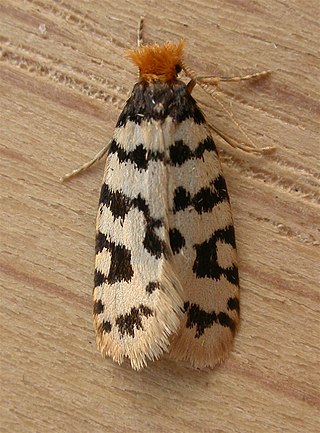
The Psychidae are a family of the Lepidoptera. The bagworm family is fairly small, with about 1,350 species described. Bagworm species are found globally, with some, such as the snailcase bagworm, in modern times settling continents where they are not native.
Eumeta crameri is a bagworm moth of the family Psychidae. It was described by John O. Westwood in 1854 and has worldwide distribution in tropical and subtropical habitats, including India, Bangladesh, Sri Lanka, New Zealand and Puerto Rico.

Taleporia tubulosa, the large birch bright, is a small nocturnal moth from the bagworm moth family (Psychidae). It is found locally in Europe, from southern Scotland, through west and central Europe, east up to Russia and the Balkans. In the north it is found in Fennoscandia. In mountainous areas it is found up to heights of 1,800 meters ASL.

Epichnopterix plumella is a moth of the family Psychidae. It is found in Europe. The female has no wings and remains in the caterpillar bag.

Luffia lapidella is a moth of the Psychidae family. It is found in Europe including The Netherlands and Belgium.
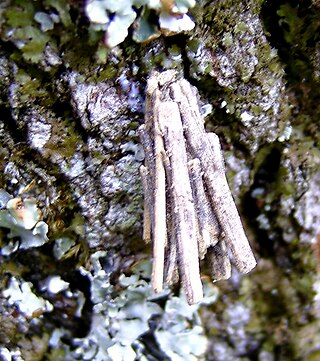
Psyche crassiorella is a moth of the Psychidae family. It is found from the coasts of the Mediterranean Sea, through the temperate areas of Europe, to England and north to central Fennoscandia. In the Alps it is found up to heights of 1,200 meters.

Metura is a genus of bagworm or case moths in the family Psychidae, endemic to Oceania. The genus contains the largest species of Psychidae known, M. aristocosma, with a larval bag of up to 300 mm and an adult male wingspan of 60 mm.

The Lichen Case-bearer is a moth of the Psychidae family. It is found in Europe and has also been recorded in North America.

Diplodoma adspersella is a moth of the Psychidae family. It is found in Germany, Austria, Italy, Hungary and Romania.

Reductoderces araneosa is a moth of the family Psychidae. It was described by Edward Meyrick in 1914. It is endemic to New Zealand and can be found in the lower part of the South Island. The preferred habitat of R. araneosa is on the edge of native beech forest. The larvae construct a case made from silk, moss and lichens and emerge from it to feed. The female of this species is wingless. The males of this species are on the wing in November and February and have been captured in the early morning.
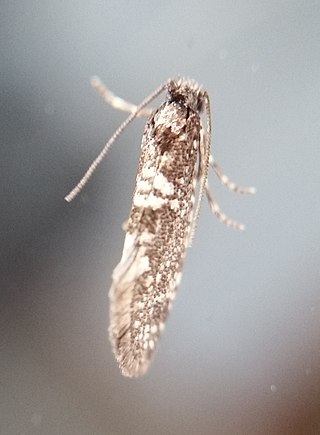
Scoriodyta conisalia is a species of moth in the family Psychidae. It was described by Edward Meyrick in 1888. It is endemic to New Zealand and can be found in the North Island. It has been observed at Karikari, Paihia, in the Poor Knights Islands, and in the Auckland and Wellington regions. The species inhabits native forest and coastal areas where it can be found on rocky outcrops and cliffs. Larvae consume algae and lichens. The adults are on the wing from September to March and are active before sunrise.

Liothula omnivora, the common bag moth, is a psychid moth endemic to New Zealand. It is also known by several Māori vernacular names like the tūngou ngou,< whare atua or kopi ('shut').
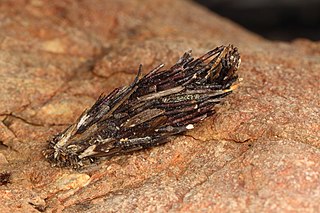
Orophora unicolor is a bagmoth of the Psychidae family, endemic to New Zealand. It was described by Arthur Gardiner Butler in 1877, and redescribed in ignorance by Richard William Fereday in the same year.
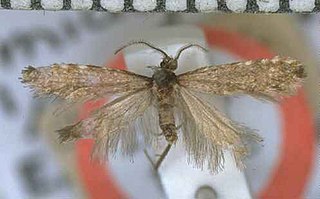
Reductoderces microphanes is a moth of the family Psychidae. This species is endemic to New Zealand. R. microphanes is a bagworm moth and its larvae likely feed on lichen or algae. Historically there has been some confusion over the identification of this species with George Hudson mistakenly describing and illustrating unnamed species and then attributing those descriptions and illustrations to this species. Charles Edwin Clarke discussed this species stating that it and its close relatives were active and able to be collected in damp mists before sunrise.
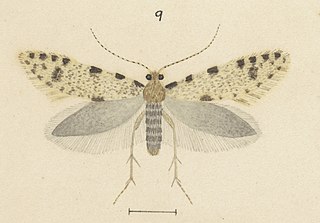
Reductoderces cawthronella is a moth of the Psychidae family. It was described by Alfred Philpott in 1921 and named in honour of the Cawthron Institute. It is endemic to New Zealand and has been collected in Nelson on the Maitai Valley side of the Botanical Hill. The larvae inhabits a fragile, pear shaped case and it has been hypothesised that they are lichen or alga browsers. Larvae pupate at the end of June and adults emerge at the beginning of August until the middle of October.
Psychoides is a genus of moths belonging to the family Tineidae. The type species is Psychoides verhuella first described by, the French entomologist, Charles Bruand in 1853. Bruand also erected the genus.
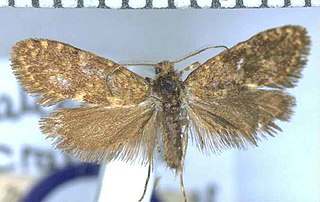
Mallobathra is a genus of moths belonging to the family Psychidae, and are bagworm moths. This genus was first described by Edward Meyrick. It is endemic to New Zealand. The type species of this genus is Mallobathra crataea.
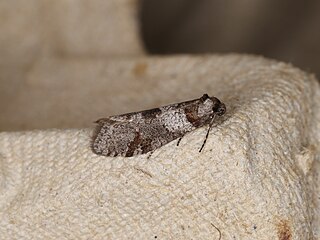
Lepidoscia heliochares is a moth of the Psychidae family first described by Edward Meyrick in 1893. This species is native to Australia but has been found in New Zealand since 1974.

Lepidoscia protorna is a moth of the Psychidae family first described by Edward Meyrick in 1893. This species is native to Australia but has been found in New Zealand since 1978.




















